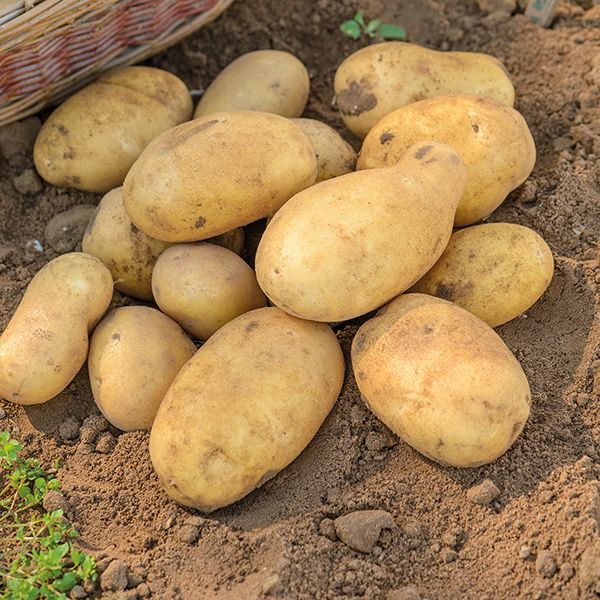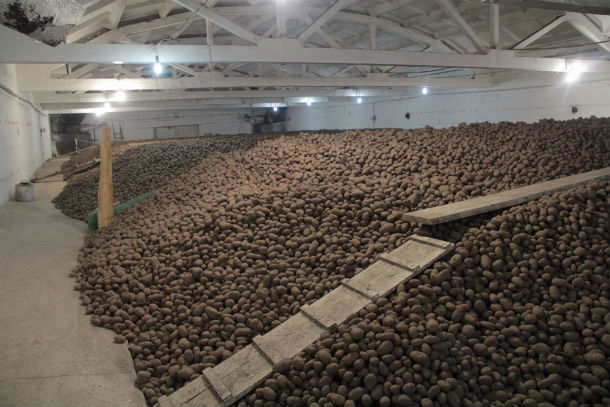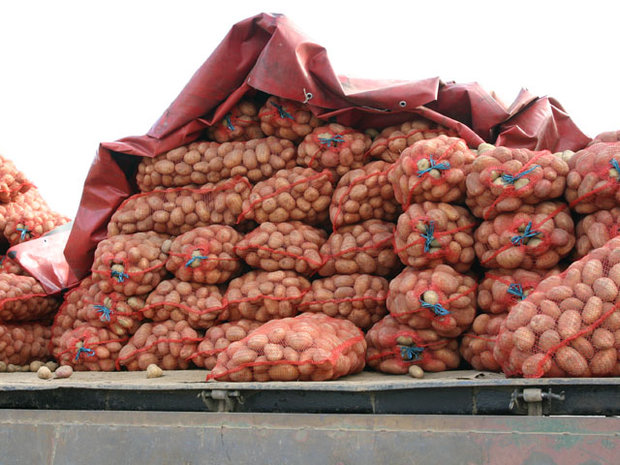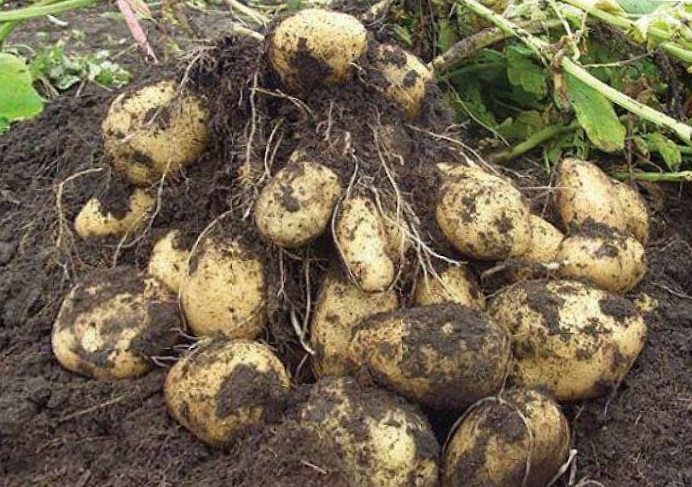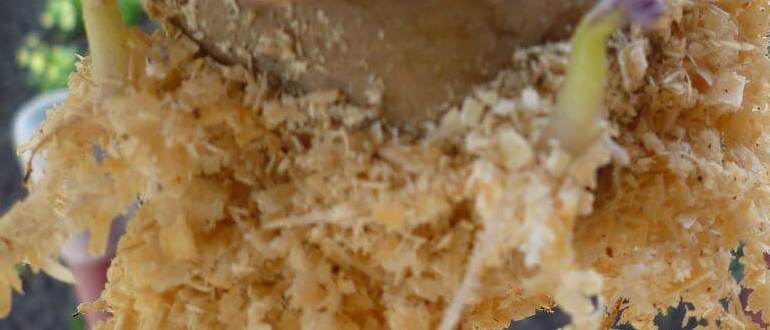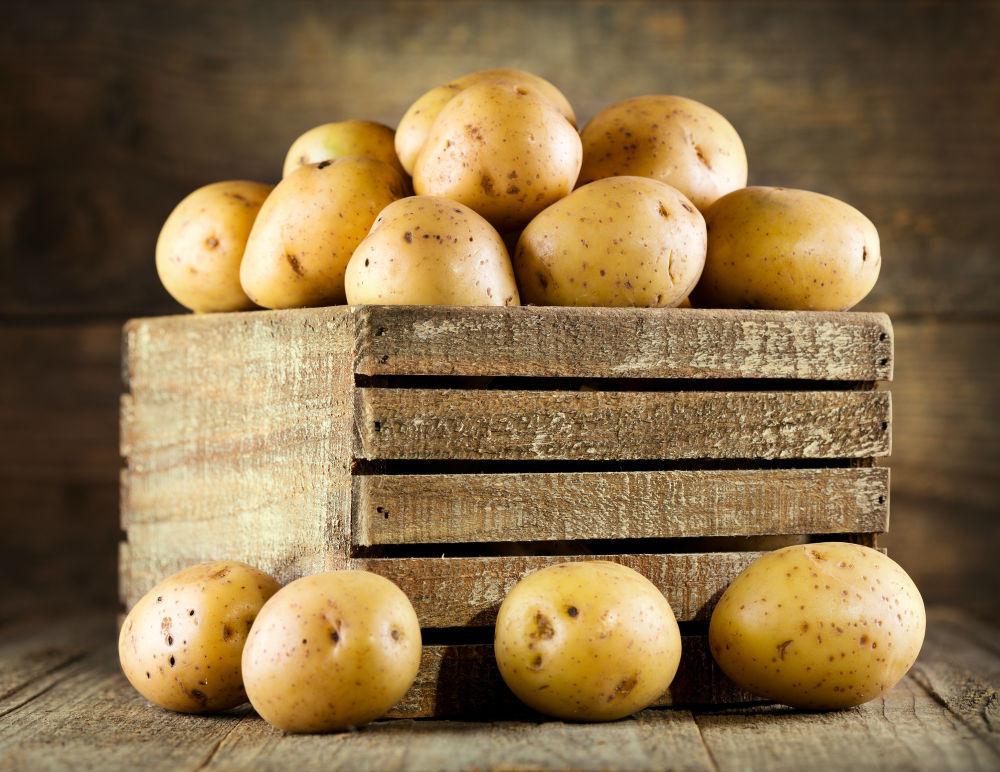Content:
Potatoes, or, as they call it, "second bread", are irreplaceable in human nutrition. It is nutritious and provides it with energy. Rarely does a family not cook their favorite fried potatoes or aromatic roasts. Potatoes are planted almost throughout the country of Russia.
a brief description of
The culture belongs to annuals. Sometimes it takes two years to grow it: during the first, seeds are sown in the garden and small nodules are harvested, in the second year, small potatoes are planted, full-fledged large tubers are collected.
The bush of the plant has mucky roots, succulent stems and foliage of various shades of green. Seeds, found in round green fruits, form after flowering is complete and maintain the purity of the variety. But this breeding method is more laborious and not so popular among gardeners. Most potato lovers are convinced that it is better to plant them with tubers or their parts.
Prerequisites for quality storage
Being able to grow excellent potatoes is a serious business that requires a lot of time and effort. But that's half the battle. It is important to know how to store potatoes without loss, so that there is enough for both planting in the spring and for consumption until the next harvest.
Proper cleaning
Successful storage depends on many factors. The conditions in which the potatoes grew, as well as timely harvesting, affect the ability of the vegetable to maintain its qualities for a longer time.
When the tubers stop growing, the vegetative part of the bush dries up and dies off. It's time to store them for the winter.
During the growing season, it was necessary for growth and maturation. But as soon as it dries up, shoots and leaves become a habitat for fungal infections that can migrate to fruits.
Time to pick potatoes
There is no need to mow the stems before. They start harvesting a couple of weeks after the tops have been cut. Before sampling from the ground, determine the degree of maturity of the potatoes. If the skin is scraped off, it means that the tubers are not yet ripe, they will begin to wilt and will be poorly stored.
Summer plantings are harvested before frost begins. To prevent the potato from getting sick, it should not be delayed with digging. Otherwise, it leads to weight loss and makes it a target for pests and diseases. Potatoes harvested on a sunny day will remain dry, which will have a positive effect on their keeping quality and storage.
In order to harvest seed material, the tubers are harvested 15-20 days after the plant has faded. At this stage, it is easy to identify strong, healthy shrubs with large tubers that are ideal for planting a new crop. The tops are mown without waiting for dying off.
The dug out potatoes are dried for a couple of hours; in case of cloudy weather, the time is extended to 3-4 hours. Planting of potatoes selected for seeds is carried out, excluding direct sunlight, which can burn the potatoes.
Storage preparation
While summer residents and gardeners are harvesting, they simultaneously carry out measures to prepare a storage space.The question of how to properly prepare vegetable stores and keep potatoes without losses becomes relevant.
Cellars and cellars are prepared in advance. In the preparation process, you should:
- check the operation of the ventilation system;
- inspect mechanical devices (if any);
- install a thermometer to control the temperature;
- disinfect places for storing vegetables.
As a rule, to preserve the product at home, it is placed in cellars and basements. Before loading the crop, they are cleaned, dried and disinfected. For disinfection, you need to prepare a solution using 1 bucket of water, lime (2.5 kg) and copper sulfate (100 g). For storage, the tubers are poured into boxes, containers or bins. It is good to keep them in grids as well. But there are other options as well.
Storing potatoes in pits and trenches
Potatoes are well stored in a pit, 1.5 m deep and 2 m wide. Tubers are laid in a layer about 1 m thick. Sprinkle 5-10 cm of sand on top, then cover with soil. With the advent of cold, such storage is insulated. Covering with peat, foliage or straw, the owner can count on the complete safety of the contents. In a trench 1 m wide, a vegetable is placed at the end of autumn, not filling up to the soil level by 10-15 cm. Then the top is covered with straw, needles and earth (0.5 m).
How to keep in an apartment
In the absence of other areas, you can store the collected, using a cooler place. This can be the space under the sink or sink in the kitchen. Place the potatoes in a basket, basin or bucket with holes made for ventilation. Many keep it on a glassed-in loggia and on an insulated balcony.
The refrigerator can also be used as a vegetable store, but the disadvantages of this method include the lack of sufficient space in it. You can also make a wooden box (box), insulated from the inside with foam, and place a starchy vegetable in it. It is good to hide such a "container" in the storage room (vestibule) on the site.
Those who do not want to fool around with a wooden box can purchase a ready-made industrial chest for storing potatoes, which is produced in Moscow. Made of painted metal, it weighs about 40 kg and measures 1050x630x850 mm.
Storage rules
For the preservation of potatoes, it is necessary to provide optimal conditions, consisting of:
- In maintaining optimal humidity in the room where potatoes are stored. It shouldn't be soggy. You can use a hygrometer or just carefully inspect the walls and ceiling. If mold or other fungal colonies, slugs or wood lice are found, the room is waterlogged, the potatoes will be susceptible to diseases. Conversely, with excessive dryness, the tubers will lose moisture, wither and wrinkle.
- Eliminating drafts that can lead to temperature drops. In frosty weather, there is a risk of freezing potatoes precisely if there is a through air flow.
- By blocking the light access to the potato storage.
Temperature regime
The question arises, what temperature the potato can withstand. It is good if in storage places it would be equal to 0 ° C. The tubers can withstand, but there is a risk of missing the moment when it drops and provokes freezing. Reducing the temperature even for a short time leads to undesirable consequences.
In order to prevent it and avoid hypothermia, it is better to keep the air warmed up to + 2 ° or + 3 ° C.
Depending on the period, the temperature during storage of potatoes changes.
During the post-harvest or treatment phase (lasting from 1.5 to 3 weeks), tubers should be stored at t = 15-20 ° C. The air humidity is 85 to 95%. At the end, it is lowered to 8-10 ° C. Further, for 3-7 weeks, it is maintained at a level from 2 ° C to 5 ° C. In such conditions, potatoes continue to be stored throughout the winter.
The different purpose of the vegetable dictates the difference in the heat-cold mode, which is shown in the table.
Temperature conditions for storing potatoes
| Seed potatoes | 2 ° C-4 ° C |
|---|---|
| For table use | 3 ° C-5 ° C |
| With cooking technology: | |
| · French fries | 7 ° C-9 ° C |
| Chips | 7 ° C-10 ° C |
Useful Tips
In addition to the main conditions that must be observed, there are also equally important nuances:
- Heating pipes laid in the basement must be insulated with special materials.
- Care must be taken to avoid perspiration on the top layer of the potatoes. It becomes the cause of decay. To prevent this from happening, put beets on top. Alternatively, the top layer of potatoes can be dusted with chalk powder.
- Misting will not occur if crops are stored in small stacked boxes.
- Mixing varieties of different ripening periods should be avoided, they have different keeping quality.
Reasons for storage losses
If you managed to stock up the potatoes, but you didn't manage to save them correctly, what if it got frozen?
In this case, the cause of the temperature drop should be determined. If the potatoes are only slightly damaged by frost, are not completely frozen, then they are suitable for consumption. When cooking, they are dipped in hot water without defrosting. The pulp, however, acquires a sweetish aftertaste due to the fact that the starch turns into sugar. But the properties of the product are preserved.
Knowing how to properly store the harvested potato crop, you can avoid some of the oversights associated with harvesting, keeping quality and storing such a familiar and beloved vegetable on our table.
